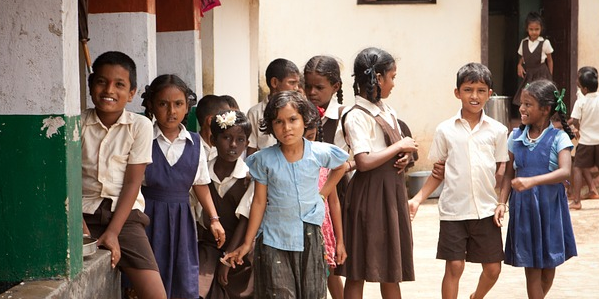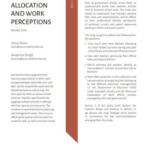
Digitising Welfare: Some Lessons from Rural Bihar
22 February 2018
To digitise aspects of public facilities for the privileged is not hard – they have ready access to multiple bank accounts, are web literate, and possess the latest smartphones for instant connectivity. For the poor and marginalised, who depend on government assistance, digitisation presents a different challenge. In rural Bihar, one of the poorest regions of the country, the effects of the government’s digitisation charge are becoming visible.
In September 2017, the Accountability Initiative conducted a survey of 1,055 children to understand how Direct Benefit Transfers (DBT) were being used so that children remain in classrooms and continue their education in Bihar.
The Problem and Subsequent Interventions
India’s public education system has been beleaguered by several problems, not least of which are low attendance and drop outs. Several children enter schools but drop out, or enrol in schools but do not attend classes. In 2015-16, over 14 per cent class V students dropped out in Bihar, despite the implementation of the Right to Education Act, which guarantees that students between the ages 6-14 have access to free, quality, elementary education.
Economic theory would suggest that transfers conditional on attendance would incentivise parents to send their child to school regularly. A conditional transfer makes it cheaper for a parent to send a child to school, instead of sending their children to work. In a bid to improve attendance and to retain students in school, the Government of Bihar has launched several conditional schemes for government school students at the elementary level.
Among these, are the scholarship scheme (Mukhyamantri Chhatravriti Yojana), and the uniform scheme (Mukhyamantri Poshaak Yojana). Students receive benefits only if they attend more than 75 per cent schooldays till September of that academic year. Till 2015-16, benefits (a sum of money) were disbursed in cash – prone to corruption. Benefits are now (2016-17 onwards) directly transferred to the students’ account (or a family member’s account). The process of the scheme is as follows. Schools first make a list of beneficiaries, and collect their financial details. They send this list to the bank along with cheques for the total amount of funds to be transferred and the bank sends the entitlements along to beneficiaries.
To understand the potential improvements in efficiency via the introduction of DBT, we surveyed 590 households in 59 villages of districts Nalanda and Purnia.
Cash transfers have been replaced
Of those respondents that had benefitted, about 50 per cent children received money in their own account, while around 45 per cent went to parents’ accounts, and to other relatives’ accounts in some cases (around 5 per cent). What was noteworthy was that out of the beneficiaries who actually received money, an overwhelming majority (around 99 per cent) got the money via DBT. This was the key finding in our study. While there have been delays, money was transferred in one instalment (unlike the cash system, when money was held back at the school), and only a miniscule fraction of parents faced issues with receiving the money (out of those that actually benefitted).
The condition to avail benefits under both schemes is the same – 75 per cent attendance till September. Needless to say, if a child is eligible for benefits under one scheme, then they are also eligible for benefits under the other scheme. Ideally, if 30 students are entitled to benefits of the Uniform Scheme, then the same number should also benefit under the Scholarship Scheme. Among those that had received benefits under the uniform scheme, only 86 per cent also received a scholarship (ideally, this should be a 100 per cent). This implies that there is some error in compiling the list or distributing the money. One possibility is that the funds for one scheme were delayed, and subsequently the school released money late as well. On average, we found that the money for uniform was released before scholarship, on average, which could explain why all students who benefitted under the Uniform Scheme did not benefit under the Scholarships Scheme. It is also possible that there were errors in compiling the list.
Delays in receiving payments
Prima facie, online transfers seem like a quick and efficient method of disbursing entitlements, but things are not as rosy as they seem. Out of the respondents who said they received the benefits, about half reported that they had received money for uniform within a month, while the corresponding figure for scholarship was higher. Still, several students had not received their benefits, despite schools having cleared the payment from their end. School teachers, parents, and other concerned citizens frequently grumbled that the bank was taking too much time to process these payments, and did not provide updates on when the money would finally reach students.
Digitisation hasn’t been as smooth as imagined
When it was announced that beneficiaries would receive money via direct transfers, parents were encouraged to open bank accounts for their children (not mandatory, as benefits can be availed using an account belonging to a guardian or family member). Our survey found that 56 per cent students had their own bank accounts. When asked, most parents either said that they had initiated proceedings to open an account, or that they did not open accounts as the child in question was too young, and that opening an account for their child was not mandatory to avail benefits. Parents also complained that banks refused to create accounts for students below class V, or would take too long to process the documents for opening an account. We also found that Aadhaar possession was nearly ubiquitous – 96.7 per cent students had Aadhaar cards, now an essential document to receive entitlements. People experienced difficulties despite having an Aadhaar card, which was meant to ease processes such as these.
Awareness generation remains a challenge
In our survey, we also observed that ‘awareness’ amongst parents was particularly low. To get a measure of awareness, we asked parents if they knew how much their children were to receive under the schemes, and less than 20 per cent responded in the affirmative. There was a clear difference in awareness levels by district – while ‘awareness’ in Nalanda exceeded 20 percent for both schemes, it was below 15 per cent in Purnia. ‘Awareness’ was also lower amongst ST and OBC households as opposed to General and OBC households, but there was no difference in terms of gender.
Even if parents are aware of their rights and entitlements, there are no grievance redressal mechanisms. There are no social audits, or there no way for parents to formally make a complaint about a certain aspect of service delivery.
While the introduction of DBT may have curtailed rent-seeking, delays in payments and a lack of bank accounts are some teething issues that need to be dealt with. For digitisation to be truly considered an upgrade on earlier transfer methods, there is a need to improve these mechanisms. At present, the system remains opaque and inaccessible, particularly for the poor who depend on the public education system. The major challenge is to generate awareness amongst beneficiaries and to provide a grievance redressal mechanism for the marginalised, in order to empower people.





